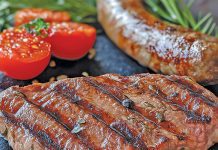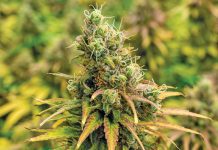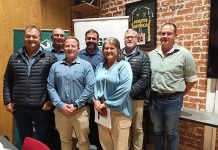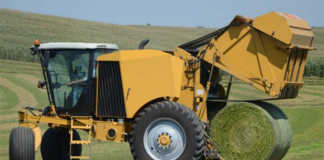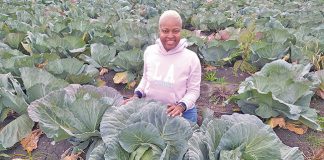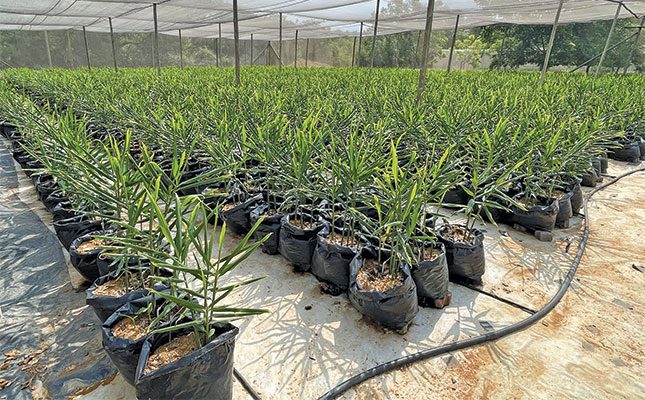
Photo: Supplied
Ika Cronjé, operations manager at Jan-Tak Boerdery in Makhado, Limpopo, has tried her hand at farming just about every vegetable she could think of. However, with limited land and a hot and humid climate, profit margins were low.
She found that crops like peppers and tomatoes, which can be grown in climate-controlled tunnels, attract more pests and diseases in the humid heat, resulting in low yields.
“All the research I did to find a crop better suited to this climate pointed to ginger, but it is very susceptible to soilborne diseases, which means you can only plant a field to ginger every four to 10 years. This means you need a lot of land to produce sufficient volumes, while always keeping a portion of the field ginger-free,” she says.
Since the farm already had a tunnel erected for tomatoes and peppers, Cronjé decided to go the hydroponic route for the ginger, planting in sawdust-filled bags that could be replaced after every cycle. This way, she didn’t need vast tracts of land to maintain production.
Today, she produces between 70t and 100t of ginger a year on 1,5ha. Her father, Braam, has joined the business as her partner, and they employ six permanent workers, with an additional 12 employed during the planting and harvesting seasons.
Cronjé muses that ginger farmers are the most secretive species on earth. Production information is therefore not freely available. Exacerbating this dearth is the fact that hydroponic ginger production is rare, in South Africa and abroad, which means there is even less information available on best practices.
Therefore, she feels she is in a continuous trial-and-error phase, working with agronomists to find the best recipe for optimum production.
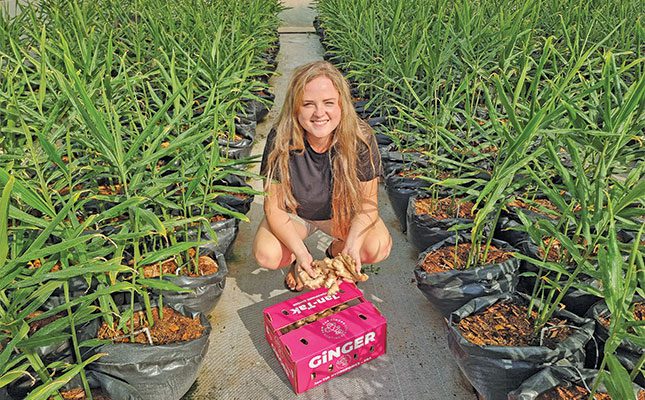
Fine-tuning production
With easy access to sawdust from a nearby sawmill, Cronjé opted to use this as a growing medium for the ginger. Since sawdust tends to oxidise over time, it is sterilised with bleach, which does not leave a residue in the medium, unlike other products like copper.
The sawdust is then placed in 40ℓ planting bags and a piece of ginger is placed in each bag to sprout.
The bags are filled manually, which is a labour- and time-intensive process, starting in winter so that planting can occur in September. The ginger then grows for eight months and is ready for harvest at the start of winter.
Around 8% to 10% of the crop is kept back to be used as seed. Cronjé notes that ginger seed is not only expensive but also hard to come by. For this reason, it takes time to get into ginger production, as you either have to secure a large amount of rhizomes at a high price, or gradually build up your own stock, as she did.
About 20% of the bags are placed in the greenhouse, which was already erected for tomatoes, with the rest under shade netting.
Cronjé explains that while ginger growing in the greenhouse provides bigger rhizomes due to the increased control over the climate, it still does not justify the cost of erecting a greenhouse compared to structures with shade netting.
Finding the optimal size of ginger to use as seed has also taken some work: smaller pieces will yield smaller plants, but going too big is not beneficial either.
In 2024, Cronjé opted for larger pieces and found that germination was poorer. She suspects that this is because the larger rhizome means there is a larger area that can attract diseases. For the current season, she opted for rhizomes the size of her hand.
She plants the varieties most favoured by the market: Indian and Hawaiian. Buyers avoid Chinese ginger because it is watery and has less flavour.
Ideal temperatures for ginger production are a minimum of about 23°C and a maximum of 29°C, with a high level of humidity. Since Makhado’s summer can exceed these temperatures, overhead micro-irrigation is used to cool down the crop and increase the humidity to prevent the leaf tips from burning in the heat.
Ginger is a thirsty crop and high rainfall is preferred. “We are supposed to get between 800mm and 1 000mm annually, but have received less over the past few years. Fortunately, we have good-quality borehole water,” says Cronjé.
Each plant requires between 1,6ℓ and 2ℓ of water each day, which is administered through drip irrigation. Keeping the plants moist is important to obtain optimal germination. But since the rhizomes are so susceptible to disease, it is crucial not to overirrigate them and induce stress.
Therefore, Cronjé does manual tests daily to determine the irrigation schedule, monitoring how much water goes into the bags and how much exits them.
The water is not recirculated. She notes that closed systems can be used, but this requires far more intensive management to ensure that diseases are not spread through the irrigation system.
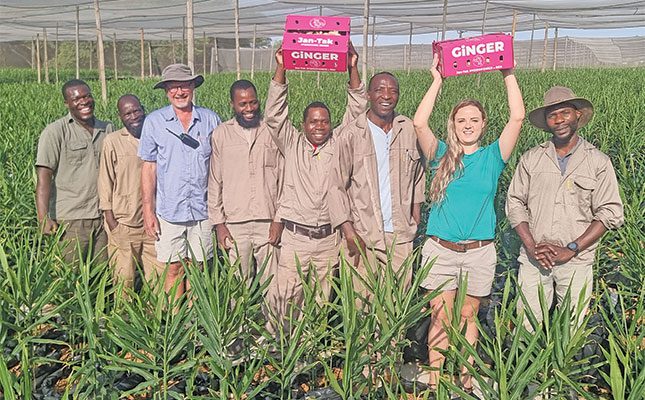
Managing health
Once the rhizomes have started sprouting, a fertigation programme commences. Foliar sprays are applied once the plants have reached the five-leaf stage. Leaf analysis is done every month to determine the nutrient needs of the crop.
Since foliar applications ensure that the plants take up nutrients much quicker than through the fertigation system, this method is preferred if a nutrient deficit is detected.
Cronjé notes that ginger requires high levels of fertiliser. Determining the exact quantities of each nutrient is, however, a work in progress, since little research is available. Increasing potassium and calcium applications during flowering has proved beneficial.
Managing fungi and bacterial infections is the second-biggest challenge that ginger farmers face after securing enough land. Cronjé says that once there is an infection on the farm, all rhizomes have to be removed and production has to start from scratch with new, clean seed obtained off-farm. “You can’t fight a fungus like Fusarium,” she adds.
Disease control begins with treating the rhizomes to be planted with chemicals that protect them against diseases.
“The rhizome has areas that are open because they are broken apart to make seed. Any plant whose roots have been damaged and has open ‘wounds’ is highly susceptible to disease. But whereas you would avoid planting a crop whose roots have open wounds, it can’t be helped with ginger,” she explains.
Cronjé has achieved much success with products containing beneficial micro-organisms, including Trichoderma and Bacillus, that fight diseases.
For her, synthetic crop-protection chemicals only become necessary when high levels of rainfall increase the risk of disease.
Cleaner ginger
When ginger is ready for harvest, the entire plant is removed from the bag, the rhizomes are cut off and rinsed, and the sawdust discarded. A neighbouring avocado farmer collects the sawdust to use as mulch.
The ginger is dipped in a food-grade sterilisation agent to protect it against any infections that might occur during handling at the market. It is left to dry for a day and then packed.
With hydroponic ginger, the rhizomes are free from soil when they are harvested; this reduces the need for excessive washing and results in a cleaner-looking product with a smooth skin.
It is therefore little wonder that Cronjé’s ginger is popular on the market, with buyers asking specifically for the “pink box”.
She packs her ginger in bright-pink, branded boxes. “The quality parameter for ginger is very high. Branding has played a big role in my success because buyers have learnt to trust my product. They know that if they buy a box from me, they won’t get back to their warehouse, start repacking the ginger and find rotten pieces in the box.
“If I had generic boxes, I’d struggle to compete with all the other ginger [producers] on the market and would likely have to accept lower prices,” she says.
Production practices can increase quality, but it is often the weather that has the last word. “If we get a lot of rain, with cool days, followed by very hot days, fungal infections increase because the plant’s immune system is compromised. In a year in which we have extreme weather, annual yields can dip to 70t. If the weather is favourable, yields can go as high as 100t.”
Going to market
The ginger is sent to fresh produce markets in Pretoria, Johannesburg and Cape Town. Cronjé laments that this is a nerve-wracking experience, since farmers have no control over the prices they receive for their product on any given day at the market.
“I can instruct my agent not to sell below a certain price, but I still need to sell it at some stage. I’m also competing against lower-quality produce that fetches lower prices, bringing down the overall price people are willing to pay for ginger,” she explains.
When investigating supply agreements with retailers, Cronjé found that prices are also determined by daily fresh-produce market prices. There is an option to fix the price when the contract is signed, but it is generally lower.
While the local ginger industry previously battled low prices when shipments of Chinese ginger flooded the local markets, Cronjé notes that these imports have decreased over the past few years, especially since the local market does not like Chinese ginger.
“But market flooding is still an issue when local farmers clear their fields and send big volumes to the market. There’s little way of knowing when this happens, and if your ginger happens to arrive at the market at the same time, prices drop drastically, below the break-even point,” she adds.
Demand for ginger has picked up, especially since the COVID-19 pandemic brought more awareness of the health attributes of the plant. And although prices have subsided since the record highs of 2020, new markets have opened up.
“In this area, I would never have thought there would be demand for ginger. But we’re seeing that low-income households use it as an immune booster. Higher-income households are increasing consumption for health and gastronomic reasons.”
Cronjé is investigating export markets and has already obtained the necessary certifications that will allow her to export. However, transport costs are high for this market, and it remains to be seen if the profit margins will improve through this channel.
Her passion for and success with ginger has earned her the title of Ginger Queen among the farming community. This is a fitting title for someone who has achieved success in an industry that is not keen on sharing knowledge.
“I absolutely love farming ginger! I love being outdoors, and even the research that goes with doing a project like this is exciting,” she says.
Email Ika Cronje at [email protected].

